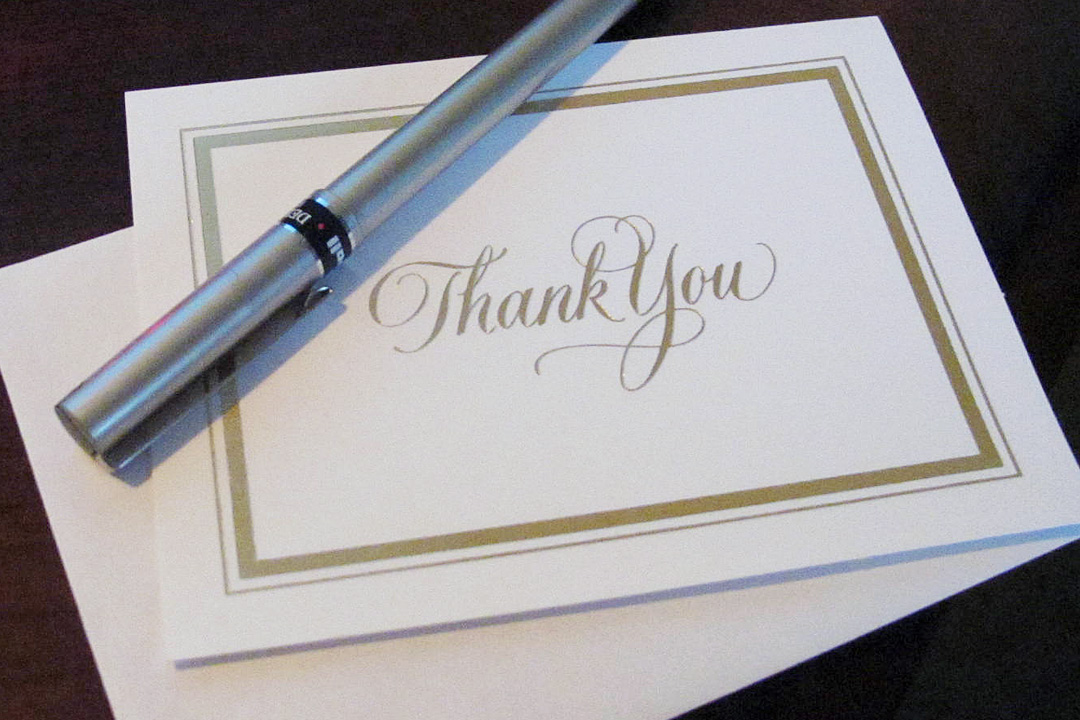 It happens all the time: you are the common denominator at a gathering of folks who don’t know each other. Your friends are meeting your parents, your spouse is meeting your boss, you’ve just run into a work acquaintance while shopping with a friend.
It happens all the time: you are the common denominator at a gathering of folks who don’t know each other. Your friends are meeting your parents, your spouse is meeting your boss, you’ve just run into a work acquaintance while shopping with a friend.
Etiquette is founded on navigating common social interactions that can sometimes be uncomfortable. The rules associated with manners are often determined by relieving people’s discomfort. In this case, there is that moment when someone is face to face with another person that they don’t know and yet are expected to speak (and possibly converse) with. This is an awkward moment, so the rules that govern the introduction stems from answering the question, “What is the best way to disseminate angst, and whose discomfort should be alleviated first?” The answer creates a proper introduction.
Part one of the introduction is who is presented to whom first. Give respect to (or first alleviate the discomfort of) clients, rank and tenure in business settings and age, honor and gender in social settings. Present or introduce:
- Business – Colleague to client: “Mr. About-to-Sign Stewart, this is my partner, Ben Edwards.”
- Business – Lower rank to senior rank: “Mr. Chief Executive, this is Junior Staffer.”
- Business – Less tenure to more tenure: “Mrs. Twenty-year colleague, this is Newbie Jones.”
- Social – Younger to older: “Mom, this is my friend Cindy Young.”
- Social – Guest to Honoree: “Guest of Honor, this is Guest Katie.”
- Social – Men to Women: “Julie, this is Jake Brock.”
- Social – Relative to non-relative: “Steve, this is my husband, Scott Williams.”
Then, complete the introduction by introducing the higher to the lower.
Next, use formal or proper names. This lets both people know what they should call the other person, even if you call the person something different. If the person being introduced would like to make the acquaintance familiar with a less formal name, he or she can choose to do that. For example, an introduction might look something like this:
- Me: “Dr. Evans, this is my husband, Scott Williams. Scott, this is Dr. Evans.”
- Dr. Evans: “Scott, it is nice to meet you. Please call me John.”
- Scott: “Thank you, John. It is a pleasure to meet you.”
Lastly – and this is particularly important in situations where there is extended time to talk – whenever you can, help begin a conversation between the two new acquaintances by pointing out something they have in common or by offering an interesting fact about the senior ranking person.
- “Julie, Jake just bought a new SLR and is taking a class at Showcase. Jake, Julie is my friend who is a professional photographer. I bet she could answer the question you had about which lens to buy.”
- “Mr. Junior Staffer, Mr. Chief Executive just returned from a safari in Africa.”
Don’t underestimate the value of a well made introduction. It makes both parties feel comfortable with their new acquaintance, and it allows you the opportunity to give appropriate respect and demonstrate social grace.
Now, if you are one of the people being introduced, you bear some of the responsibility of making the situation flow smoothly. First, pay attention to the person’s name. If you didn’t catch it on the first mention, now is the best time to make sure you’ve got it. (“I’m sorry, I missed your name. Could you repeat it?”) You may be expected to introduce this person to someone else if your common acquaintance walks away and someone new walks up.
Next, make eye contact and shake hands with a firm but not hand-breaking grip. (This goes for women, too – none of this “four-fingers on a broken wrist” stuff.) Acknowledge the person’s name by repeating it and affirming the introduction. Also, men should always stand when being introduced. It is not mandatory that women stand, but sometimes it is awkward to remain seated. It is OK for a woman to stand, and particularly in a business setting, it is probably best to do so.
Finally, be prepared in the art of conversation. This will likely call for its own post, but you should always be prepared to make light but interesting conversation.






Comments
Powered by Facebook Comments